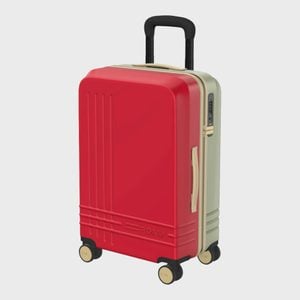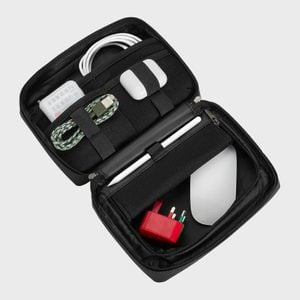Where to Travel for the Best Shoulder Season Deals All Year Long
Updated: Jan. 31, 2024

For smaller crowds and better deals on flights and hotels, plan your next vacation during shoulder season
Our editors and experts handpick every product we feature. We may earn a commission from your purchases.Learn more.
With airfare prices climbing to record highs and hotels charging premium rates for even the most basic rooms, traveling on a budget feels like an increasingly impossible goal. You may be looking at budget airlines, researching the best time to book a flight and considering the merits of a motel vs. hotel, but the bottom line is, travel is expensive. Thankfully, we still have one trick up our sleeve that’ll help you travel cheaply. And it has to do with the shoulder season.
Planning your trip during shoulder season can help you save money on travel, and it comes with an added bonus: In many destinations, crowds are much lighter during shoulder season. Shoulder season savings have a lot to do with when and where you travel. So here’s a look at what shoulder season actually is and why it can offer major savings.
Get Reader’s Digest’s Read Up newsletter for more travel, humor, cleaning, tech and fun facts all week long.
What is the shoulder season?
Shoulder season is the transitional time between a destination’s high and low seasons. Just about everywhere in the world, high season translates to the highest prices for flights and accommodations, the most crowded conditions and usually the best weather. Low season means far fewer crowds and lower prices but often weather conditions that are less than pleasant for sightseeing—think monsoon season in Thailand, for example.
Shoulder season is the happy medium. It’s called “shoulder” season because, if you envision travel seasons as a triangle with the high season at the peak and the low season at the base, shoulder season sits on either side of the peak—on the triangle’s shoulders, if you will. Another way to think of it: During this time, it typically isn’t hot enough for short sleeves or cold enough for coats. Instead, it’s just cool enough to keep your shoulders covered.
Just about every destination in the world has a shoulder season, but they’re not always at the same time. It all depends on the destination’s geographic location and what travelers go there to do, whether that’s lounging on the beach, skiing, leaf peeping or some other activity.
What are the benefits of traveling during the shoulder season?
Devotees will tell you it’s the best time to save money on flights, find a bigger selection of reasonably priced hotels and vacation rentals, and encounter fewer crowds—all while enjoying reasonably pleasant weather.
Lower airfares
Even in a year when airfare prices are unusually high, it’s cheaper to fly during shoulder season. Don’t believe us? We ran a sample itinerary through the Hopper travel app, which predicts airfares for a full calendar year. The app put round-trip tickets from New York to Paris at $625 during the spring shoulder season, showed them creeping up to $775 in May and predicted they’d peak at $1,075 (and higher) in June, July and August before dropping back down again in the fall.
Using a flight price tracker can help you get even better rates by alerting you when the price of a flight changes before you book.
More hotel inventory
More empty hotel rooms during less-busy times of the year means more competitive prices. It also means you’ll have more choices, so maybe snagging an upgraded room with a view of the Grand Canal in Venice isn’t so out of reach. If you can wait until a week or so out to book your hotels, you can save even more, as hotels would rather sell a room for less than leave it empty.
Fewer crowds
Kids are often in school during shoulder season, so you’ll see fewer families on vacation at popular destinations, such as theme parks. Beaches aren’t quite warm enough to be crowded with sunseekers, and some beaches are even better in the fall. Ski slopes might not be blanketed in white, but they’ll be great for hiking—or late-spring snow might make for some last-minute ski runs. And while you probably won’t find national parks or European capitals totally crowd-free, you will likely find the crowds more manageable than in the thick of summer.
What months are considered the shoulder season?

Broadly speaking, shoulder season occurs during the springtime months of March, April and May, as well as the autumn months of September, October and November. There are exceptions, of course, including around spring break and Easter holidays, Thanksgiving and Christmas, and, in Europe and many Latin American countries, the weeks leading up to Carnival (Mardi Gras).
Keep reading for a look at when shoulder season falls in various parts of the world and what to expect there.
North America
Most parts of North America align with the spring and fall shoulder season rule. Destinations like Hawaii and Alaska may be cheaper and less crowded in the fall, and you’ll see a lull in theme park crowds right after kids head back to school. For Florida beaches, try the window after Easter but before school vacations start in June. Get more specific with our guide to the cheapest months to visit each state.
Europe
The secret is out! Savvy travelers are now visiting Europe in the spring or fall to avoid sweltering summer temperatures. That’s right: The best time to visit Italy and other European countries is during shoulder season.
While you’ll still find crowds at this time, they won’t reach peak summer saturation, especially in densely packed cities like Rome, Paris and Barcelona. Shoulder season is a great time to explore hidden gems in smaller European destinations too.
The Caribbean
Like North America, the Caribbean shoulder season occurs in late spring and the fall. That said, if you book travel to the Caribbean in the fall, keep an eye on the weather forecast: June 1 through Nov. 30 is hurricane season—a serious storm could cancel, cut short or otherwise disrupt your trip.
Asia
Asia is a vast geographical area, so different shoulder season norms apply region by region. Because most of Asia is in the Northern Hemisphere, its seasons align with those of North America and Europe—but that doesn’t mean shoulder seasons are the same.
In South Asia, shoulder season runs from June through November, while in Central Asia, the hot months of July and August make up the shoulder season. In China, Japan and much of Southeast Asia, shoulder season follows the spring/fall pattern of Western continents. Whenever you travel, if you’re headed overseas, don’t forget to pack these items.
The Middle East
If you’re shopping for travel deals to the geographically diverse Middle East region, know that summer is the low season in many Persian Gulf countries. That’s because of the extremely high temperatures.
You’ll find shoulder season pricing in the spring and fall. When planning a spring trip to the Middle East, be sure to consider holidays. During Ramadan in many Muslim countries, a good number of restaurants will be closed during the day to observe daytime fasting rules. Non-Muslims are not expected to fast, but eating and drinking in public during daylight hours may well be perceived as a sign of disrespect. Turkey and Jordan are less strictly observant. In Israel, Ramadan is observed only in the country’s Muslim areas.
Africa
Did you know that the seasons are reversed in Southern Africa, and when it’s winter in the United States, it’s summer there? Shoulder season months are the same, except that autumn in South Africa, for example, happens from March to May, and spring runs from September to November.
The farther north you go on the continent, the more you’ll encounter Northern Hemisphere seasons (and shoulder seasons). Time it right, and this will be one unforgettable bucket-list vacation.
Oceania
Like Southern Africa, countries in Oceania—including Australia, New Zealand and the thousands of islands in the central and southern Pacific Ocean—experience seasons opposite to those in the Northern Hemisphere. When the United States is bundled up for winter, these countries are basking in the summer sun. On the flip side, U.S. summer is their winter.
Shoulder season months are reversed as well. In other words, spring shoulder season happens from September to November, and fall shoulder season is from March to May.
Central and South America
About two-thirds of South America is in the Southern Hemisphere, so like Oceania, the seasons there are “flipped.” Still, shoulder seasons largely occur in the same months as in the Northern Hemisphere: March to May (fall) and September to November (spring).
In Central American countries like Costa Rica, shoulder season is determined by precipitation. The dry months of December to April are high season, and a short shoulder season falls between May and June before the rainy season starts full force in July and lasts through October.
Get vacation ready
Whether you’re heading out for a quick trip or an extended vacation, make sure you’ve got the luggage, clothes and travel accessories that’ll make packing a breeze and get you there in comfort and style. Remember that if you’re traveling in the shoulder season, pack layers—transitional weather during shoulder season months means you might be warm, cool or both during the length of your trip.
Sources:
- KSHB 41: “Experts predict airfare will remain high in 2023”
- Money: “Hotel Prices Are Up a Whopping 54% Right Now. Here’s Why”
- Hopper
- Costa Rica Escapes: “When Is the Best Time to Go to Costa Rica?”
- World Nomads: “What to Know About Traveling to Muslim Countries During Ramadan”
























